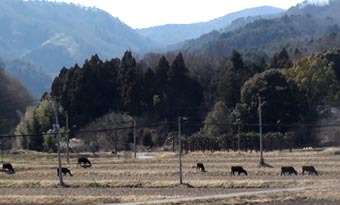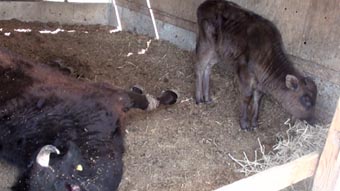 |
   |
| HOME > Action >Petition Requesting that Adequate Care be Provided for Livestock in the Vicinity of the Fukushima Nuclear Power Plant |
|
|
|||||||||
ALIVE
All Life In a Viable Environment
5-18-10-102, Honkomagome, Bunkyo-ku, Tokyo, 113-0021
Japan
Tel.+81-3-5978-6272
Fax..+81-3-5978-6273
![]()
Anti Vivisection Action Network
One month has passed since the March 11 earthquake that hit the northeastern part of Japan and crippled the Fukushima Daiichi Nuclear Power Plant. The Japanese government has announced that it would make the area currently set as a voluntarily evacuation zone into a no-entry zone. The government also said it has a plan to expand the evacuation zone beyond the present 20km radius. We would like to urge the government to consider the points in the petition below in order to help and rescue the livestock in the disaster areas.
Petition Requesting that Adequate Care be Provided for Livestock in the Vicinity of the Fukushima Nuclear Power Plant April 14, 2011 Mr. Michihiko Kano, The plan for animal rescue in disasters includes a section concerning
animal management and hygiene control as wells as on ways of providing
feed in times of disaster. Based on this plan, we would like to
ask the Ministry of Agriculture, Forestry and Fisheries to take
immediate action to help and protect livestock. The evacuees did not know how long the evacuation would last, so in many cases families have left cattle and other livestock behind. The evacuation has been prolonged and some evacuees go home periodically to feed and take care of their livestock. On the other hand, some farmers decided to free their livestock because they thought they might not be able to come back. The released cows are wandering around in the affected areas and some of them have been seen dead. Other cows that are chained in cowsheds have no water or food, so they are slowly dying of starvation. The areas that are now a voluntarily evacuation zone will soon be a mandatory evacuation/exclusion zone. The decayed carcasses of cows or other livestock will soon become a major public hygiene problem. This will also negatively affect wild animals and biodiversity. There are many Wagyu farmers in the planned evacuation area, which
lies within a 30 km radius of the plant, and how to help the Wagyu
cattle in the area is now under consideration. In any case, there
is an urgent need to establish measures to address the above-mentioned
issues quickly. We would like to ask the relevant government bodies
to take immediate action to resolve these issues. 2. Feeding and giving water 3. Evacuation of livestock 4. Transfer of livestock ownership 5. Performing Euthanasia 6. Burial of cattle 7. Hire temporary special staff
Non Profit Organizaition: ALIVE: All Life In a Viable Environment
(Chikyu Seibutsu Kaigi) Number of deaths of cattle/livestock recorded in Miyagi Prefecture (dairy cattle, beef cattle, pigs, laying chickens and broilers): 1,186,926 (Miyagi Prefecture excluding Taga City, Chihigahama City and Onagawa City). The causes of the death were mainly drowning and starvation. (Miyagi Prefecture homepages, April 14, 2011) |
|

